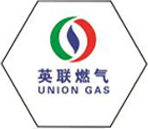
Oct . 19, 2024 17:56
Back to list
natural gas valve
Understanding Natural Gas Valves Key Components for Efficient Gas Management
Natural gas is a vital energy source used in homes, industries, and power generation. This versatile fuel is delivered through a complex network of pipelines, where various components work in harmony to ensure its safe and efficient transport. Among these components, natural gas valves play a critical role. In this article, we will delve into what natural gas valves are, their types, functions, and importance in the natural gas industry.
What is a Natural Gas Valve?
A natural gas valve is a mechanical device that regulates the flow of natural gas through pipelines. Valves are designed to control, direct, or stop the flow of gas, ensuring that it reaches its destination safely and efficiently. They are crucial for maintaining pressure levels, preventing leaks, and facilitating safe operations in gas distribution systems.
Types of Natural Gas Valves
Several types of valves are employed in natural gas applications, each serving a specific purpose
1. Gate Valves These are primarily used for on/off control. When fully opened, they allow for minimal resistance to gas flow, making them suitable for high-flow applications. However, they are not ideal for throttling purposes as they can lead to significant pressure loss.
2. Ball Valves Known for their reliability and quick operation, ball valves consist of a hollow, perforated sphere that can rotate to control flow. They provide excellent sealing capabilities and are typically used in applications requiring frequent on/off cycling.
3. Globe Valves Globe valves are designed for precise flow control, making them suitable for throttling applications. Their unique design allows for a smoother flow path, minimizing turbulence and pressure drop.
4. Check Valves These valves prevent backflow in the system, ensuring that gas flows in one direction only. This is essential for protecting infrastructure and equipment from reverse flow, which could cause damage.
5. Pressure Relief Valves Safety is paramount in natural gas systems, and pressure relief valves play a crucial role. They automatically release gas from the system when pressure exceeds a predetermined level, preventing potential explosions or system failures.
natural gas valve

Functions of Natural Gas Valves
The primary functions of natural gas valves include
- Flow Regulation By adjusting the valve position, operators can control the volume of gas flowing through the system, ensuring that delivery meets demand without over-pressurization.
- Isolation Valves enable sections of the pipeline to be isolated for maintenance or in emergency situations, allowing for repairs without disrupting the entire system.
- Safety Safety valves, such as pressure relief valves, are critical for protecting both personnel and equipment. They help prevent accidents by alleviating excessive pressure build-up.
- Throttling In some cases, valves allow for adjustments in flow to maintain desired operational parameters, ensuring that downstream operations remain stable.
Importance of Maintenance and Regular Inspection
Given the critical role that valves play in the natural gas infrastructure, regular maintenance and inspection are essential. Valves can wear over time due to corrosion, mechanical stress, or environmental factors, leading to potential leaks or failures. Routine checks can identify issues before they escalate, ensuring that systems remain safe and efficient.
Operators should also adhere to industry standards and regulations concerning valve maintenance, ensuring that all equipment is compliant with safety norms.
Conclusion
Natural gas valves are indispensable components in the transportation and distribution of natural gas. They not only control and regulate gas flow but also play a vital role in ensuring safety across the entire gas supply system. As the demand for natural gas continues to grow, the importance of effective gas management through reliable valve systems becomes increasingly paramount. By understanding their types, functions, and maintenance needs, stakeholders in the natural gas industry can enhance the efficiency and safety of their operations, contributing to a more sustainable energy future. Thinking ahead, integrating innovative technologies and practices in valve design and maintenance could further optimize natural gas delivery systems and safeguard vital infrastructure.
Next:
Latest news
-
Safety Valve Spring-Loaded Design Overpressure ProtectionNewsJul.25,2025
-
Precision Voltage Regulator AC5 Accuracy Grade PerformanceNewsJul.25,2025
-
Natural Gas Pressure Regulating Skid Industrial Pipeline ApplicationsNewsJul.25,2025
-
Natural Gas Filter Stainless Steel Mesh Element DesignNewsJul.25,2025
-
Gas Pressure Regulator Valve Direct-Acting Spring-Loaded DesignNewsJul.25,2025
-
Decompression Equipment Multi-Stage Heat Exchange System DesignNewsJul.25,2025

